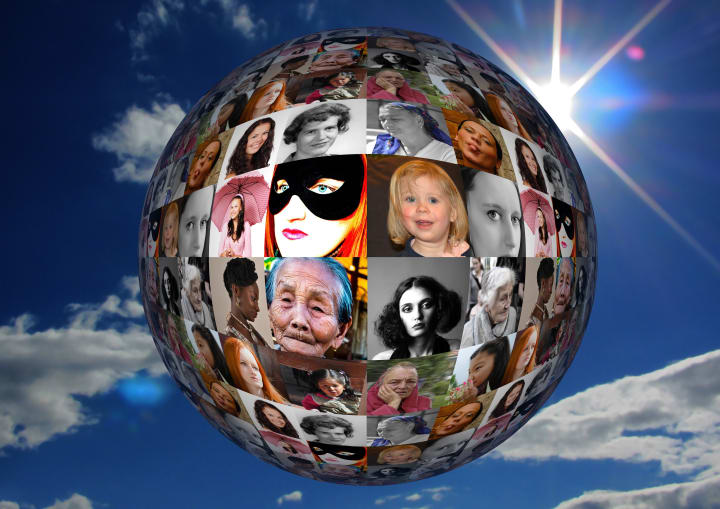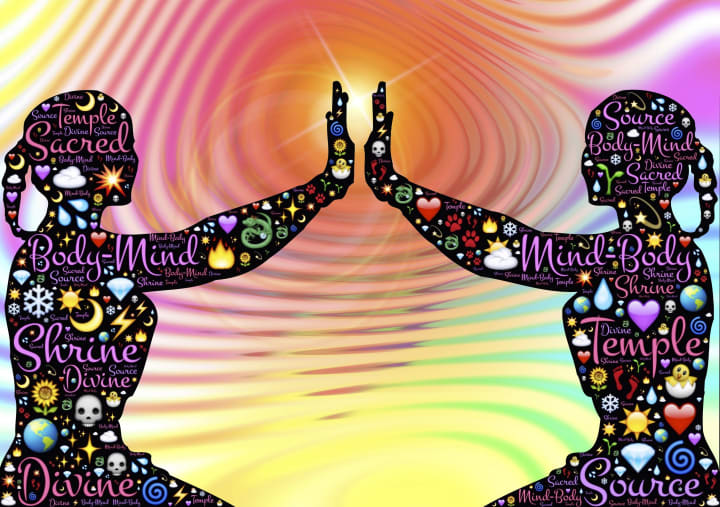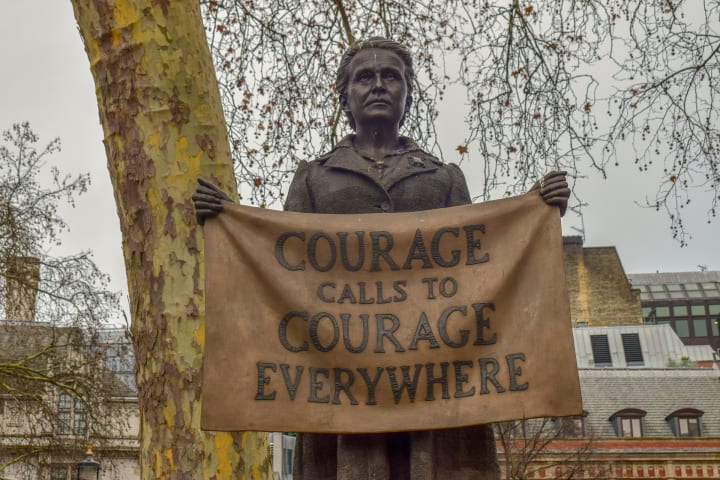Celebrating the Strength and Diversity of Women
"Achieving Gender Equality: Celebrating the Progress Made and the Work Still to Be Done"

I. Introduction
Brief overview of the role of women throughout history
Women have played a significant role in human history, but their contributions have often been undervalued or overlooked. In many societies throughout history, women were excluded from political, economic, and social decision-making, and were often considered inferior to men.
Despite these challenges, women have always found ways to make their voices heard and to effect change. In ancient civilizations, women held positions of power as queens, priestesses, and healers. In more recent times, women have made significant contributions in a variety of fields, including the arts, sciences, politics, and activism.
Throughout history, women have also organized and fought for their rights and the rights of others. The women's rights movement, which began in the 19th century and continues to this day, has helped to bring about important changes such as the right to vote, the right to access education, and greater legal protections against discrimination and violence.
Today, women continue to make important contributions in all aspects of society and are increasingly represented in leadership positions. Despite this progress, there is still work to be done to achieve gender equality and to ensure that women's voices are heard and their rights are respected.

The importance of recognizing and uplifting the achievements and experiences of women
It is important to recognize and uplift the achievements and experiences of women for a number of reasons.
First, acknowledging the contributions and accomplishments of women helps to acknowledge their value and worth. It can also serve to inspire and empower other women, particularly young girls, by showing them that they too can achieve great things.
Second, recognizing the experiences and challenges faced by women can help to bring attention to issues of inequality and discrimination, and can inspire efforts to address and rectify these issues. This can help to create a more equitable and just society for everyone.
Finally, celebrating the achievements and experiences of women helps to create a more inclusive and diverse society. By uplifting the voices and stories of women, we can create a more complete and nuanced understanding of the world and of the human experience.
II. Women in leadership positions

Examples of successful women in various fields (politics, business, science, etc.)
There are countless examples of successful women in various fields, and it is impossible to list them all. However, here are a few examples of successful women in different fields:
Politics: Angela Merkel (Chancellor of Germany), Jacinda Ardern (Prime Minister of New Zealand), Aung San Suu Kyi (State Counselor of Myanmar)
Business: Mary Barra (CEO of General Motors), Ginni Rometty (CEO of IBM), Ursula Burns (CEO of VEON, former CEO of Xerox)
Science: Marie Curie (Nobel laureate in Physics and Chemistry), Rosalind Franklin (contributed to the discovery of the structure of DNA), Chien-Shiung Wu (experimental physicist)
Arts: Beyoncé (singer, songwriter, and actress), J.K. Rowling (author), Frida Kahlo (artist)
Activism: Malala Yousafzai (human rights activist and Nobel laureate), Gloria Steinem (feminist activist), Nelson Mandela (anti-apartheid activist and former President of South Africa)

The impact of having more women in positions of power and influence
There are many positive impacts of having more women in positions of power and influence.
First, having more women in leadership roles can help to create a more balanced and diverse perspective in decision-making. Women often bring different experiences and viewpoints to the table, which can lead to more innovative and inclusive solutions.
Second, having more women in leadership positions can serve as a role model and inspire other women to aspire to leadership roles. This can help to create a more equitable and diverse leadership pipeline.
Third, research has shown that companies with more diverse leadership teams tend to perform better financially. This suggests that having more women in leadership roles could have a positive impact on business outcomes.
Overall, having more women in positions of power and influence can help to create a more balanced and inclusive society, and can lead to a range of positive outcomes.
III. Women in the workforce

The gender wage gap and efforts to address it
The gender wage gap refers to the difference in earnings between men and women. In the United States, on average, women earn about 80 cents for every dollar earned by men. The gap is even larger for women of color, with Black women earning just 61 cents and Latinas earning just 53 cents for every dollar earned by white, non-Hispanic men.
There are a number of factors that contribute to the gender wage gap, including discrimination, bias, and the segregation of women into lower-paying occupations.
Efforts to address the gender wage gap include laws and policies that aim to eliminate discrimination and bias in the workplace, as well as initiatives to promote the advancement of women into leadership roles and higher-paying occupations.
One example of a policy aimed at addressing the gender wage gap is the Equal Pay Act of 1963, which prohibits employers from paying unequal wages to men and women for the same work. Other efforts to address the gender wage gap include initiatives to promote pay transparency, and the implementation of diversity and inclusion strategies in the workplace.
While progress has been made in closing the gender wage gap, there is still much work to be done to achieve true equality in the workplace.
The challenges and discrimination faced by women in the workplace
There are many challenges and forms of discrimination that women may face in the workplace. Some common challenges and forms of discrimination include:
Unequal pay for the same work: As mentioned earlier, the gender wage gap is a persistent problem, with women earning on average less than men for the same work.

Limited advancement opportunities: Women may face barriers to advancement in their careers, such as the lack of mentors or sponsors, or discrimination based on their gender.
Harassment and discrimination: Women may experience harassment or discrimination based on their gender, race, ethnicity, sexual orientation, or other characteristics. This can take many forms, such as sexual harassment, racial slurs, or being passed over for promotions or other opportunities.
Work-life balance: Women may face challenges in balancing the demands of their job with the demands of their personal life, such as caring for children or aging parents.
Stereotypes and biases: Women may face stereotypes and biases based on their gender, which can limit their opportunities and opportunities for advancement.
Addressing these challenges and forms of discrimination is important for creating a more equitable and inclusive workplace for women.
The benefits of diversity and inclusivity in the workplace
There are many benefits to diversity and inclusivity in the workplace. Some of the main benefits include:
Improved performance: Research has shown that diverse teams tend to perform better than homogeneous teams. This may be because diverse teams bring a wider range of perspectives and experiences to the table, leading to more innovative and effective solutions.
Increased creativity and innovation: A diverse workforce can bring a wide range of ideas, experiences, and backgrounds to the table, which can foster creativity and innovation.
Greater appeal to customers: A diverse and inclusive workplace can help to attract and retain a diverse customer base.
Improved decision-making: Having a diverse group of people making decisions can lead to more well-rounded and informed decision-making.
Enhanced reputation: A diverse and inclusive workplace can improve an organization's reputation and public image.
Overall, embracing diversity and inclusivity in the workplace can lead to a range of benefits for both the organization and its employees.

IV. Women and activism
The history of women's activism and the women's rights movement
The women's rights movement, also known as the feminist movement, is a social, political, and cultural movement that seeks to advance the rights and status of women. The history of the women's rights movement is long and varied, with roots dating back to ancient civilizations.
In the 19th and early 20th centuries, the women's rights movement focused on issues such as suffrage, or the right to vote. Women in the United States and Europe organized and protested, and eventually won the right to vote with the passage of the 19th Amendment in the United States in 1920 and the Representation of the People Act in the United Kingdom in 1918.
In the latter half of the 20th century, the women's rights movement broadened its focus to include a wide range of issues, such as reproductive rights, domestic violence, sexual harassment, and equal pay. The movement also became more inclusive, with women of color and LGBTQ women playing a more prominent role.
Today, the women's rights movement continues to work towards achieving gender equality and challenging discrimination against women. This work takes many forms, such as lobbying for policy change, raising awareness about issues affecting women, and supporting women's empowerment and leadership.

Current issues and movements, such as #MeToo and Black Lives Matter
There are many current issues and movements related to women's rights and gender equality. Some examples include:
#MeToo: The #MeToo movement is a global movement against sexual harassment and assault, particularly in the workplace. The movement gained widespread attention in 2017 when numerous women came forward with allegations of sexual misconduct against powerful men in various industries.
The #MeToo movement has led to increased awareness about the prevalence of sexual harassment and assault, and has spurred efforts to address these issues and hold perpetrators accountable.
Reproductive rights: The right to make decisions about one's own reproductive health, including the right to access abortion, is an important issue for many women. In recent years, there have been efforts in various countries to restrict or eliminate access to abortion, leading to protests and activism in support of reproductive rights.
Black Lives Matter: The Black Lives Matter movement is a global movement that seeks to combat racism and police brutality, particularly against Black people. The movement has brought attention to issues such as racial profiling, discrimination, and the disproportionate impact of violence on Black communities. Many women, particularly women of color, are actively involved in the Black Lives Matter movement.

LGBTQ rights: LGBTQ (lesbian, gay, bisexual, transgender, and queer) people, including women, continue to face discrimination and marginalization in many societies. The LGBTQ rights movement works to challenge discrimination and promote equality for LGBTQ people.
These are just a few examples of the many issues and movements related to women's rights and gender equality.
The role of intersectionality in women's activism
Intersectionality is a concept that recognizes that people can experience multiple forms of oppression and discrimination based on their race, ethnicity, gender, sexual orientation, class, ability, religion, and other identities.
Intersectionality acknowledges that these forms of oppression and discrimination often intersect and overlap, and that they cannot be fully understood or addressed in isolation.
In the context of women's activism, intersectionality is important because it recognizes that women's experiences are not all the same, and that the challenges and discrimination faced by women can vary depending on their other identities.
For example, a Black woman may face discrimination based on both her gender and her race, and may experience these forms of discrimination differently than a white woman.
Incorporating an intersectional perspective into women's activism is important because it helps to ensure that the movement is inclusive and representative of the diverse experiences of women.
It also helps to challenge the idea that gender is the only form of oppression that women experience, and highlights the need to address other forms of discrimination as well.
V. Conclusion
The progress that has been made for women's rights and equality
Throughout history, women have made significant progress in the fight for their rights and equality. Women have won the right to vote, access education, and participate in the workforce and public life.
In many countries, women have also made important gains in terms of legal protections against discrimination and violence.
For example, in the United States, the 19th Amendment to the Constitution granted women the right to vote in 1920.
The Civil Rights Act of 1964 and subsequent legislation also prohibited discrimination on the basis of sex, race, and other characteristics in education and the workplace.
Other countries have also made significant progress in advancing women's rights and equality. For example, many countries have implemented laws and policies aimed at promoting gender equality and combating discrimination, such as affirmative action programs and parental leave policies.
Despite these gains, there is still work to be done to achieve true gender equality. Women continue to face challenges and discrimination in many areas, including the workplace, and there is still a persistent gender wage gap.
Women also face challenges related to reproductive rights, violence and harassment, and other issues.
The work that still needs to be done to achieve true gender equality
There is still work to be done to achieve true gender equality in many areas. Some of the main areas where progress is needed include:
The workplace: Despite progress in terms of legal protections and increasing representation of women in the workforce, women still face challenges and discrimination in the workplace.
This includes issues such as the gender wage gap, limited advancement opportunities, and harassment and discrimination.
Reproductive rights: In many countries, women still face challenges in terms of their reproductive rights, including access to abortion and other reproductive health services. There is also a need to address issues such as maternal mortality and reproductive coercion.
Violence against women: Violence against women, including sexual assault and domestic violence, is a widespread problem that affects women of all ages and backgrounds.
More needs to be done to prevent violence against women and to support survivors.
Political representation: Women are underrepresented in political office in many countries. Increasing the representation of women in politics can help to ensure that women's voices are heard and their perspectives are taken into account in decision-making.
Social and cultural attitudes: In many societies, there are still deeply ingrained attitudes and beliefs about gender roles and the place of women in society. Challenging these attitudes and promoting gender equality at a societal level is an important step towards achieving true gender equality.
There are many other areas where progress is needed to achieve true gender equality. It will take the efforts of individuals, organizations, and governments to address these issues and create a more equitable and inclusive society for all.
The importance of continuing to celebrate and support women in all aspects of life.
It is important to continue to celebrate and support women in all aspects of life for a number of reasons.
First, celebrating and supporting women can help to recognize and honor the valuable contributions that women have made and continue to make in various fields. This can serve as a source of inspiration and empowerment for other women, and can help to create a more inclusive and diverse society.
Second, supporting women can help to create a more balanced and equitable society.
This can involve supporting initiatives that promote women's rights and gender equality, such as policies that address the gender wage gap or that provide support for working mothers.
Finally, celebrating and supporting women can help to create a more inclusive and supportive culture. This can involve challenging gender stereotypes and promoting gender equality in various areas of life, such as in the home, in the workplace, and in the community.

Overall, continuing to celebrate and support women is important for creating a more equitable and inclusive society for all.
About the Creator
Enjoyed the story? Support the Creator.
Subscribe for free to receive all their stories in your feed. You could also pledge your support or give them a one-off tip, letting them know you appreciate their work.





Comments
There are no comments for this story
Be the first to respond and start the conversation.